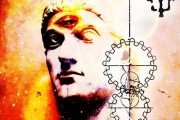Viewings: 6588

Although most modern discussions about the existence of paranormal occurs in research psychology and culture, in reality the history of the study of psychic abilities as much, if not more, is based on the physical Sciences and clinical medicine.
A recent article from Reality for Sandwich researcher Floor Devereaux analyzes biophysical experiments of Dr. Michael Persinger and Blake of Dott from Laurentian University in Ontario and it is clear from these experiments, they carry our attention back to the physical characteristics of the phenomena:
"Parapsychology, as a rule, provides evidence in the form of statistics, and so this is all too easily becomes an object of accusations in "lies, damned lies and statistics" - as credible monitoring of many subjective responses in laboratory tests, but why not spend these hardly repeatable paranormal phenomena in experimental conditions? When it comes down to it, the real paranormal phenomena like telepathy or predicting events, phenomena, etc. critics tend to the same accusations of perception or deceit in respect of the applicants and indicate that in any case such messages just a coincidence and unacceptable as scientific evidence.
Most scientists requires "irrefutable" evidence (as well as the generally accepted view, irrelevant changeable nature of the paranormal). But now a study respected Michael Persinger with Blake Dott and their team from Laurentian University in Ontario, presented the situation as if die-hard skeptics stopped, finally, collisions on this ground. For this Laurentian the researchers took a special course on standardization of parapsychology " and he did it brilliantly.
The Persinger, a famous (or infamous) for his so-called "helmet of God", helmet, which holds the electrodes in the place of its fastening at the temples. These electrodes generate programmed model of weak magnetic fields, which stimulates the cerebral cortex in the temporal area, causing a feeling invisible "presence" and other strange feelings. (Actually, Persinger has developed this procedure for the study of neurological use of magnetism in therapy instead of pharmaceutical products.) Then he and his colleagues developed a supplementary instrument, called "Octopus" because of the many electrical wires. Rather, the device is known as circulararray magnetic simulator (CMS), it mostly consists of solenoids (coils), set at a distance from each other on the bezel, is fastened around the skull.
Solenoids controlled by a computer program, which allows them to rotate strictly in accordance with weak magnetic fields around the head. This magnetic stimulation can affect the brain in a variety of ways, including partially violating the so-called 40 Hz "connecting factor" of the brain, which is usually not possible to bring all of our incoming sensory signals in a smooth, complete perception of the world. Translating into a non-technical language, this violation is usually reduces or mask information from "Higher mind" in the attainment of knowledge. Some of this information, it seems, may have paranormal qualities, whatever they were."
Devereaux mentions that he has tested an early version of CMS device with the provocative results and feels that more research in this area are of great importance. The work of Persinger is based on similar works, which started to be carried out in such universities as the Rhine research center in Durham, North Carolina. Bio-energy laboratory Rhine in the last 30 years is engaged in research of bio-photon emissions from entities, initiating an altered state of consciousness. This type of research provides a more direct approach in eksperementiruyu with the problem of interaction of the mind-matter.
Another interesting area of research, returning to the roots research psyche clinical parapsicologia that Anneliese Vental, Executive Director of the Association of parapsychology, briefly described in the last message in Public Parapsychology. Mental explains that clinical parapsychology is part of the study, which helps psychotherapists, psychologists, psychiatrists, social workers and family doctors, faced with customers who report, no doubt, "paranormalnykh" exciting events, but do not show the traditional signs of psychopathology." Despite sceptical assessment of the phenomena in the media, Mental mentions that "there are small outpatient clinics with professional staff in Europe and South America that serve the survivors paranormal emergency. However, the chances for these people in North America and other parts of the world is limited." As she says, "different or similar - paranormal phenomena can be considered as scientifically proven, but still subject to dispute. But reports disappointing results of the paranormal from psychologically healthy in all respects people are widespread."
This kind of research is Central to the work of the research centre of the Rhine, together with Dr. Christina Simmonds-Moore of the University in Western Georgia that specializes in overlap between the parapsychology, clinical psychology and mental health, and Dr. Jim carpenter, whose therapeutic work with experimentalarmy tells his recent publication is the First glance: psychic experiences and parapsychology in everyday life Unexpected or spontaneous paranormal phenomena can be traumatic, and in cases where there is no history or signs of mental illness that indicate the need counseling; all this plays an important role in the study of minimal areas human capabilities.
















